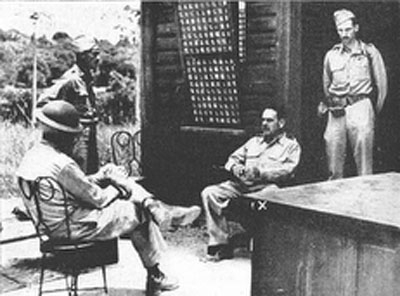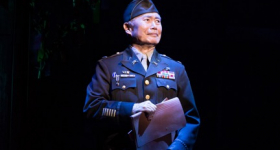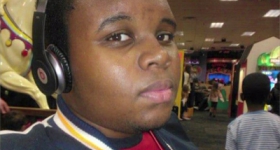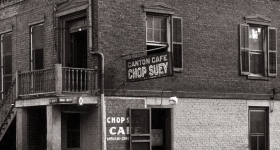Photo courtesy of the National Archives
Seventy years ago, one of the greatest sacrifices of World
War II was made by Filipino and American soldiers at Bataan and
Corregidor. After a fierce and bitter
four-month battle, Bataan fell on April 9, 1942 and Corregidor a month later on
May 6. This delayed the timetable of the
Japanese from occupying the entire Asia Pacific and gave the Allied forces time
to marshal the forces that impeded the Japanese invasion of Australia. And yet, in the United States, this
important date is not commemorated, not taught in schools. It didn't even garner a footnote in major
publications on its 70th anniversary. In
this country, few people know that most of the fighting and dying were made
by Filipinos. On top of this, their rights
as veterans were rescinded by the US in 1946. To this day, these rights have not been fully
restored.
Approximately 10,000 soldiers were killed in action in
Bataan and another 800 in Corregidor. Another tragedy of Bataan lies in the death of another 15,000 soldiers, mostly
sick and emaciated, when they were forced to march some 60 miles away to their
prison camp. What led to this
unfortunate disaster?
When I was growing up in the Philippines, General Douglas
MacArthur was lionized and hailed as the savior of the Filipino people during
World War II. His unforgettable words,
“I shall return” have been etched in the minds of many Filipinos, and his arrival
on Oct. 17, 1944 in the shores of Leyte established his
status of the conquering hero. However, if we examine MacArthur's series of decisions regarding the Filipino soldiers, nothing could be further from the truth.
In 1935, MacArthur became Field Marshall of the Philippine
Commonwealth Army, as well as its Military Advisor -- with the task of creating
an army in preparation for its eventual independence in 1946. So confident was MacArthur of his defense
plan, that he declared: "no Chancellery in the World will ever
willingly make an attempt to willfully attack the Philippines.” On July 26, 1941, because of worsening
relations with Japan, the US Congress
ordered the Philippine Commonwealth Army into the service of the United States. MacArthur was placed in command of the US
Forces of the Far East (USAFFE). The
new recruits were only provided with a month or two of training using World War
I artillery, and many were not provided proper uniforms, shoes or helmets.
A few hours after the bombing of Pearl Harbor, General Brereton of the Far East Air Force requested permission from MacArthur’s Chief
of Staff Col. Richard Sutherland to bomb the Japanese harbor in Takao, Formosa
in compliance of Rainbow 5 War Plan. His
multiple requests were withheld by MacArthur and ultimately deferred in favor
of a photographic reconnaissance. As a
consequence, Japanese bombers attacked Clark Field, Nichols, and Iba Air Bases
-- destroying more than half of the air
force fleet that day.

Photo courtesy of the National Archives
Furthermore, instead of enacting War
Plan Orange #3, which provided for the prolonged defense of Luzon from the
peninsula of Bataan, MacArthur ordered his men to meet the Japanese on the
beachhead. The Japanese army proved to be a formidable match, so that by December
24, MacArthur switched his plan to War Plan Orange. There was not enough time to transfer
much-needed food, medicine and ammunition to Bataan. Ten million pounds of rice
at Cabanatuan could not be moved out of the
province, and by law, had to be destroyed instead of transported to
Bataan. General MacArthur’s staff also forbade
the transfer to Bataan of Japanese-owned stocks of food and clothing. As a result, the men of Bataan only had a
thirty-day supply of unbalanced field rations for 100,000 men.
Little did the men in Bataan know that their fate was
already sealed on December 22, 1941 when Roosevelt and Churchill decided that
their prime objective was to save Europe first. But even on February 9, 1942, President Roosevelt continued to reassure
President Quezon of his support:
"So long as the flag of the United States flies on Filipino
soil," Roosevelt assured Quezon, ". . . it will be defended by our
own men to the death."
MacArthur's message to the troops was also a promise of aid
and a call to valor. "Help is on the way from the United States," he
had said. "Thousands of troops and hundreds of planes are being
dispatched. The exact time of arrival of reinforcements is unknown as they will
have to fight their way through...." Help and relief never came. MacArthur made only one recorded visit to the
Bataan front, earning him the name “Dugout Dug”.
The desolate men of Bataan called themselves the “Battling
Bastards of Bataan”. A poem was written
by American correspondent Frank Hewlett in 1942:
We’re the battling bastards of Bataan
No mama, no papa, no Uncle Sam
No aunts, no uncles, no cousins, no
nieces,
No pills, no planes, no artillery pieces
And nobody gives a damn
Nobody gives a damn.
In 1979, historian Carol Petillo discovered a memorandum
from the papers of chief of staff General Sutherland, revealing a
conveyance of $640,000 made in January 1942 from the Philippine Treasury
to the personal bank accounts of MacArthur and his immediate staff. Philippine Commonwealth President Quezon
provided MacArthur a bonus of 46/100 of 1% of the defense spending up to 1942,
and yet the Filipino troops were not provided proper uniforms, shoes, or even
helmets.
Most books written about Bataan are from an American
perspective. Some even deride the
Filipinos’ role. In the April 2007 issue
of America
in WWII, a division
commander reported, “the native troops did only two things well. One, when an
officer appeared to yell attention in a loud voice, jump up and salute; the
other, to demand three meals per day.”
The voices of the Filipino soldiers who served in
Bataan and Corregidor are slowly fading into silence. Will they ever receive justice? Will they ever get their due glory?
***
Cecilia Gaerlan is a Bay Area playwright
based in Berkeley, California. She has
recently adapted for the stage her debut novel In Her Mother's Image. During the past year she
has been creating awareness of the Fall of Bataan and the Bataan Death March in
a series of lectures.









Comments
Corregidor is definitely one of the most haunting historical sites in the Philippines, with huge guns still mounted in their placements and pointed towards Bataan. Definitely worth a visit, and worth remembering.
Cecilia -- Really wonderful article.
Bernard, you can try contacting Preservation or Conservation staff at the National Archives in return for a restored copy. Email preservation [at] nara.gov, and hopefully they will be able to help you. Best of luck!